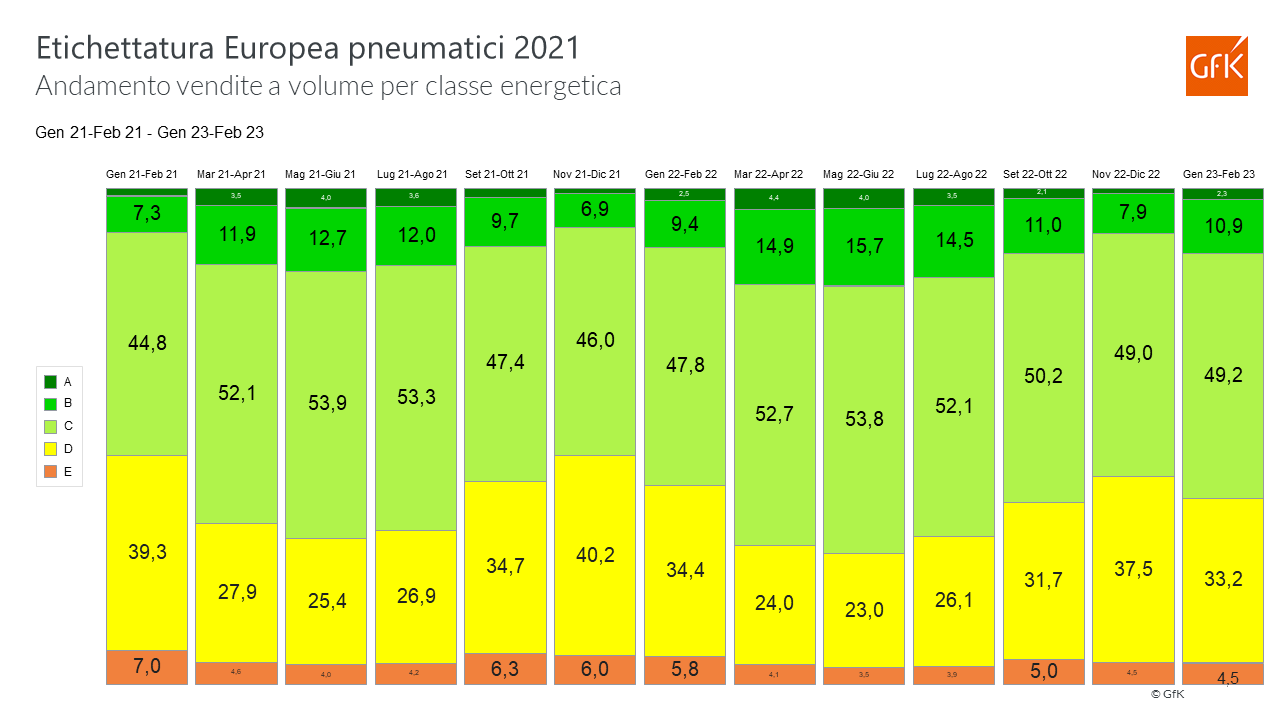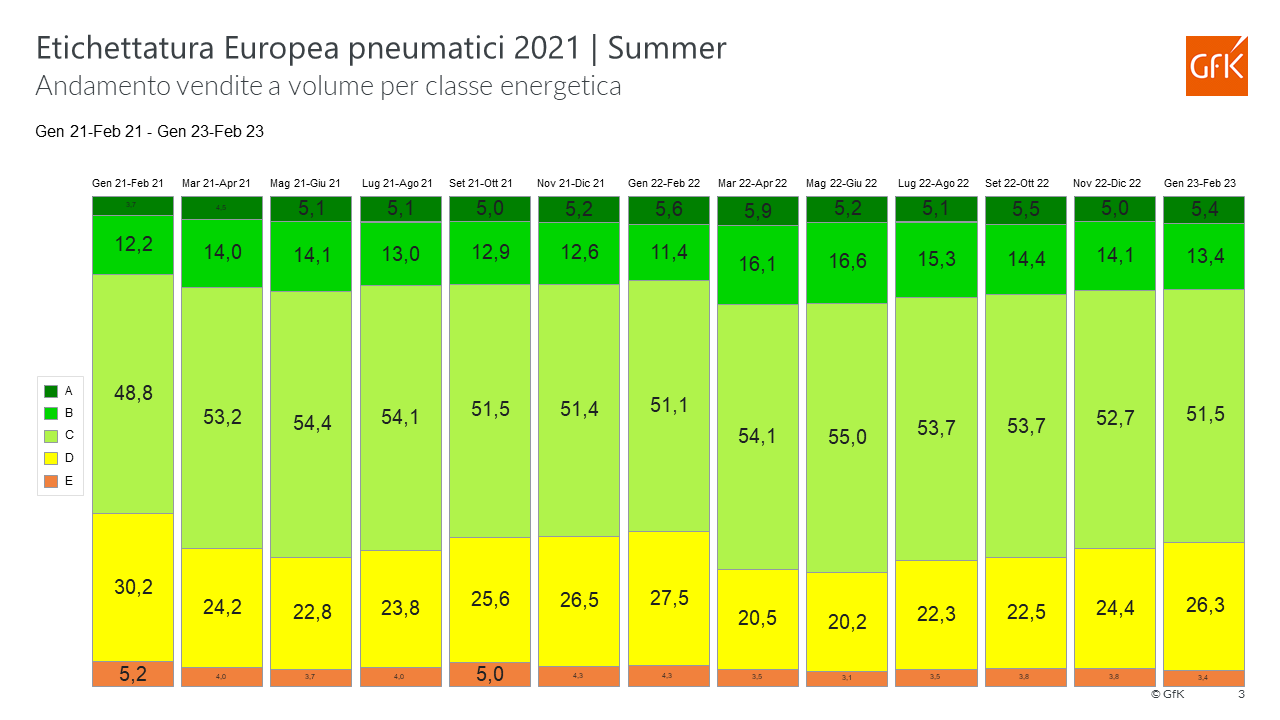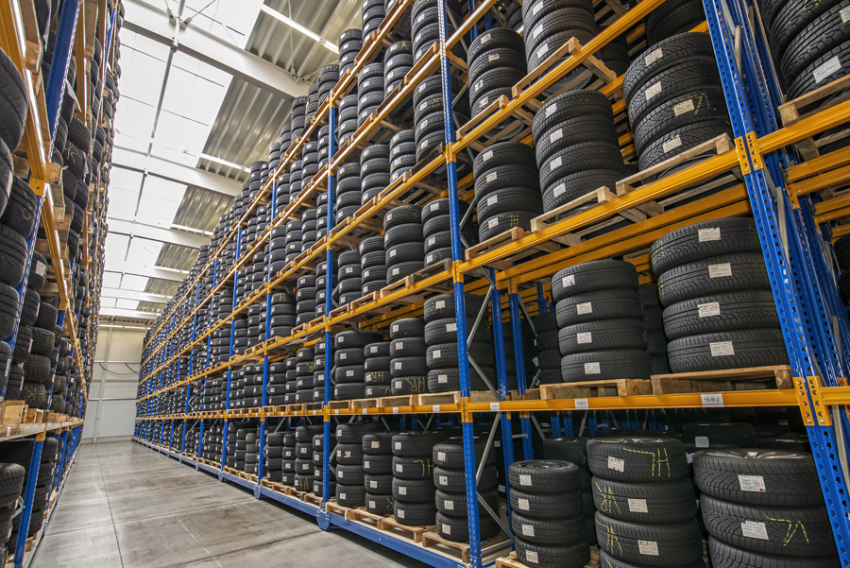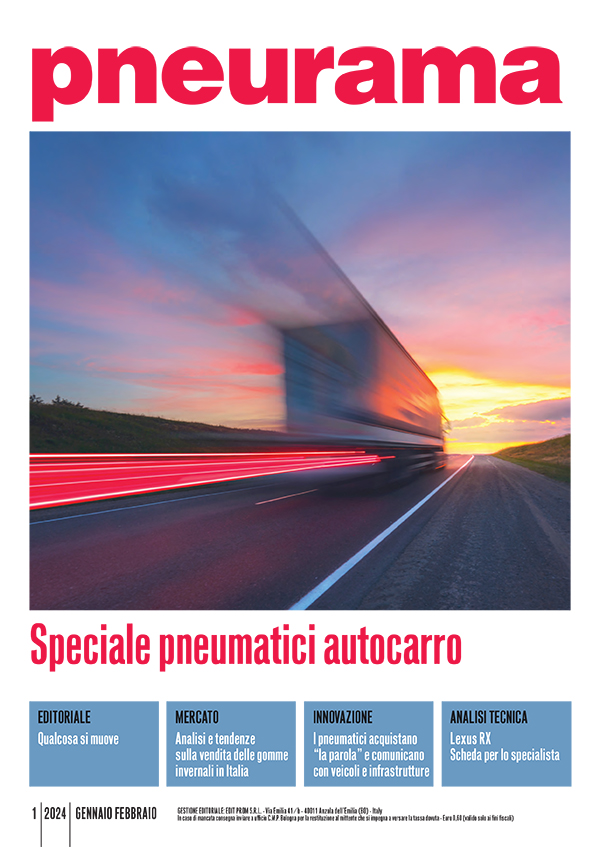Among the most important news for the automotive sector in recent years, the introduction of the new version of the tyre energy label is certainly noteworthy. Introduced on 1 May 2021, the label has among its primary goals that of providing consumers with more comprehensive information on the characteristics of their chosen tyres. In particular, the label provides information on wet grip, fuel efficiency and noise level. In addition, pictograms relating to performance in heavy snow and/or ice conditions are also part of the package.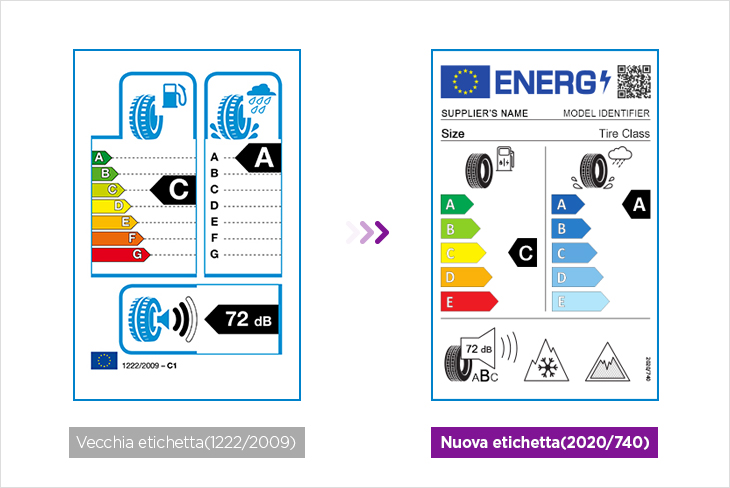 The new label stems from a need to guarantee greater attention to vital issues such as sustainability and energy consumption, which are becoming increasingly felt among consumers: globally, as many as 45% declare that they take environmental protection into account when purchasing a product. In order to understand the impact of energy efficiency on this specific segment, GfK Italia is able to monitor the volumes of tyres sold according to their energy class within the Tyre Specialist network. Data show that during 2022 there was a substantial increase in the purchase of high-end tyres (A, B and C), which guarantee lower fuel consumption. In a period of great economic uncertainties, when the cost of fuel - and of life in general - has risen, motorists have increasingly shifted their focus to energy efficiency, while companies are producing more technologically advanced and efficient tyres to keep up with new consumer demands.
The new label stems from a need to guarantee greater attention to vital issues such as sustainability and energy consumption, which are becoming increasingly felt among consumers: globally, as many as 45% declare that they take environmental protection into account when purchasing a product. In order to understand the impact of energy efficiency on this specific segment, GfK Italia is able to monitor the volumes of tyres sold according to their energy class within the Tyre Specialist network. Data show that during 2022 there was a substantial increase in the purchase of high-end tyres (A, B and C), which guarantee lower fuel consumption. In a period of great economic uncertainties, when the cost of fuel - and of life in general - has risen, motorists have increasingly shifted their focus to energy efficiency, while companies are producing more technologically advanced and efficient tyres to keep up with new consumer demands.
The new label stems from a need to guarantee greater attention to vital issues such as sustainability and energy consumption, which are becoming increasingly felt among consumers: globally, as many as 45% declare that they take environmental protection into account when purchasing a product. In order to understand the impact of energy efficiency on this specific segment, GfK Italia is able to monitor the volumes of tyres sold according to their energy class within the Tyre Specialist network. Data show that during 2022 there was a substantial increase in the purchase of high-end tyres (A, B and C), which guarantee lower fuel consumption. In a period of great economic uncertainties, when the cost of fuel - and of life in general - has risen, motorists have increasingly shifted their focus to energy efficiency, while companies are producing more technologically advanced and efficient tyres to keep up with new consumer demands. Specifically, higher sales are particularly evident for B-class tyres, whose share grew by almost +50%, from 7.3% in January-February 2021 to 10.9% in the same period in 2023. Furthermore, during 2022, this specific segment reached almost 16 percentage points during peak seasonal replacement months. The increase in sales of B-class tyres came mainly at the expense of D- and E-class tyres. The lowest energy classes, in fact, were the only ones to decline at the beginning of 2023 compared to the end of 2022.
These data are indicative of a greater propensity towards tyre efficiency and performance, no longer with a view to immediate savings single purchase but rather as a medium to long-term investment in terms of fuel consumption, both costs and emissions. Moreover, this shows the growing awareness by motorists, who are increasingly attentive to performance and issues such as road safety and noise pollution, on the technical features of the tyres they purchase.
